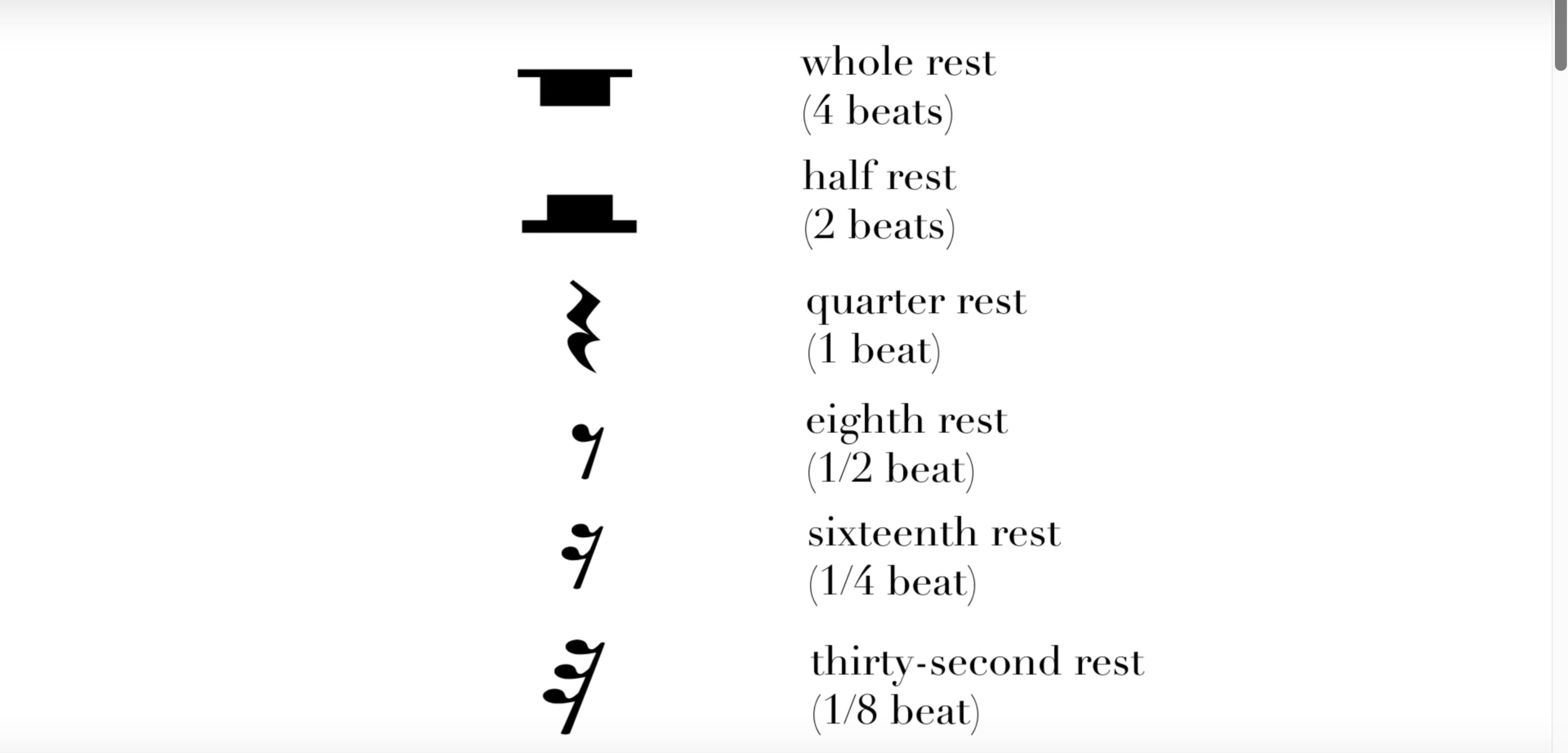Notes and Rests, Part 1 - TWO MINUTE MUSIC THEORY #4
Today, we will look at note values. And when I say note values, I specifically mean in terms of duration. Music, of course, is not just a series of sounds, but also of time. Music notation tells us how long each note is to be played or sung.
There is a pulse to music, that we call a beat. These beats may be strong, weak, or in between. The pattern of strong and weak beats form time signatures, which we will look at in a later video.
Types of Notes
This is called a whole note. It is worth four beats. It is called a whole note, because it takes up an entire measure in common time.
This is a half note. Logically, it is worth two beats, because it is worth half of a whole note. Hence, the name.
This is a quarter note. Worth 1/4 of a whole note, it takes up one beat. Therefore, it takes 4 quarter notes to fill a measure in common time.
The notes continue to get smaller and smaller, and as they do, they take up half of the space of the one previous. Two eighth notes make a quarter note. Two 16th notes make an eighth note. Being that this is music theory, we can theoretically extrapolate this and say that two 512th notes equals one 256th note.
Types of Rests
Now, along with each of the notes, there is a corresponding rest. They receive the same length as their note counterparts, except the player remains silent.
A whole rest is worth 4 beats of rest, the half rest is worth 2 beats of rest and so on and so forth.
Of course, I would be remiss if I didn’t mention that a 512th rest is half the value of a 256th rest.










